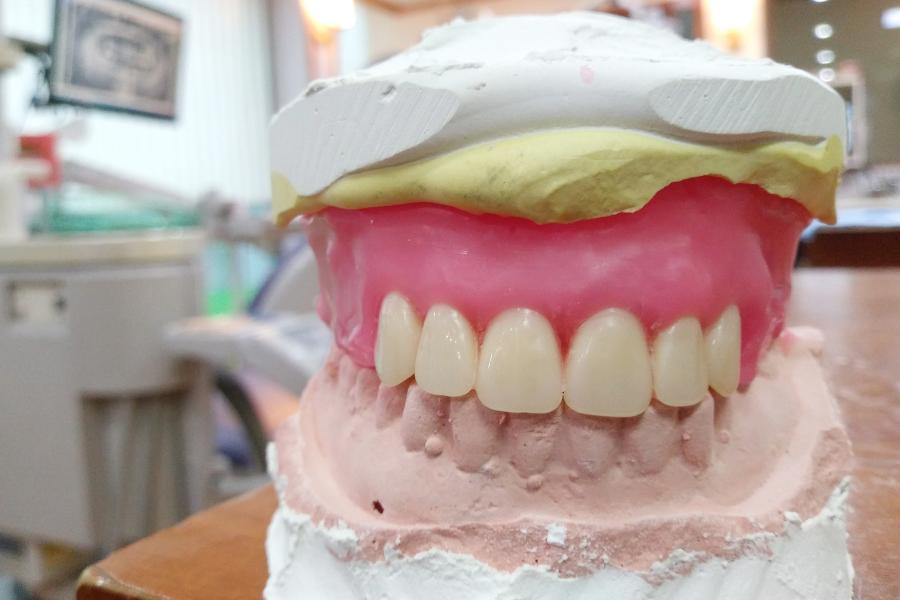From Model to Mouth: The Art and Science of Wax Duplicate Dentures
Let’s explore wax duplicate dentures. This intriguing method involves creating a replica of an existing denture using dental wax.

Why Use Wax Duplicate Dentures?
In the realm of dentistry, precision and efficiency are paramount.
Wax duplicate dentures, often overlooked but indispensable, play a pivotal role in ensuring the successful repair and replacement of dentures.
History of Wax Duplicate Denture Technique
The history of wax duplicate dentures is intertwined with the evolution of dentistry itself. In the early days of dentures, creating accurate replicas was a formidable challenge. Dentists often relied on crude methods, such as taking impressions with beeswax or clay, which frequently resulted in distorted or incomplete copies.
Over time, advancements in materials and techniques led to significant improvements in wax duplicate denture technology. The introduction of more precise impression materials, like alginate and polyether, allowed for a more detailed and accurate capture of the oral cavity. Additionally, the development of specialized waxes and techniques for creating wax duplicates ensured that the resulting replicas were highly accurate and durable.
Benefits for Patients and Practitioners
For patients, wax duplicates are invaluable. They maintain their familiar fit and bite while a new denture is prepared. For dentists, it’s a wonderful time-saving method that ensures high-quality patient care—a true win-win scenario.
Essential Materials and Equipment
Various types of waxes are used in this technique, each suited for different stages of the process. Some waxes are softer for easy molding, while others are harder to capture detailed reproductions.
Waxes:
- Baseplate wax: This soft, pliable wax is used to create the base of the duplicate denture. Its malleability allows for easy shaping and adaptation to the patient’s oral anatomy.
- Utility wax: A slightly harder wax used to add details and contouring to the baseplate wax. It provides a more precise and accurate representation of the original denture.
- Bite registration wax: A soft, pink wax used to record the patient’s occlusion and jaw relationship. This information is essential for ensuring proper alignment of the duplicate denture.
The Dental Lab’s Role in Wax Duplicate Denture Creation
The dental lab is a crucial component in the process of creating wax duplicate dentures. While the dentist initiates the process by taking impressions and creating the wax duplicate, the lab technicians are responsible for the intricate tasks that follow.
- Receiving and Analyzing the Wax Duplicate: The lab receives the wax duplicate, along with the patient’s impression and any relevant information from the dentist. Technicians carefully examine the duplicate to assess its accuracy and identify any areas that may require adjustments.
- Creating the Denture Mold: Using a specialized plaster or stone, the lab technicians create a negative mold of the wax duplicate. This mold will serve as a template for the new denture.
- Pouring the Denture: Once the mold is ready, the lab technicians pour a denture material, such as acrylic or porcelain, into the mold. This material will set and harden to form the new denture.
- Finishing and Polishing: After the denture has set, the lab technicians finish the denture by trimming, shaping, and polishing it to ensure a smooth and comfortable fit.
- Adjusting the Occlusion: The lab technicians will adjust the denture’s occlusion to ensure that it fits properly with the opposing teeth. This involves making sure that the teeth align correctly when the patient bites down.
- Quality Control: Before the denture is sent back to the dentist, the lab technicians perform a final quality control check to ensure that it meets all the necessary standards.
Full Denture Replication Scenarios
Creating full dentures can be a daunting task for both dentists and patients. However, the wax duplicate technique offers a valuable solution. Consider the case of a patient who has become accustomed to their existing full dentures. The patient may be hesitant to transition to a new set, fearing discomfort or a change in their appearance. In such scenarios, a wax duplicate can provide a seamless transition. By replicating the original dentures, the patient can maintain their familiar fit and function while a new set is being fabricated.
Partial Denture Duplication
Wax duplicate dentures are equally beneficial for partial dentures. Partial dentures require a precise fit to ensure proper function and aesthetics. The wax duplicate technique allows for the creation of a replica that seamlessly blends with the patient’s natural teeth, providing a comfortable and natural-looking restoration.
Special Considerations for Implant-Supported Prostheses
When dealing with implant-supported prostheses, precision is paramount. The success of these restorations depends on the accurate alignment of the denture with the underlying implants. Wax duplicate dentures offer a reliable method for achieving this precision. By creating a replica of the existing denture, dentists can ensure that the new prosthesis will fit securely and comfortably on the implants, providing a stable and functional restoration.
Troubleshooting and Problem-Solving
Identifying and Correcting Wax Imperfections
Occasionally, minor imperfections such as air bubbles or detail inconsistencies appear. Fortunately, wax’s forgiving nature allows these to be fixed with careful adjustments.
Should a new denture feel uncomfortable, it usually requires minor adjustments. Close collaboration with patients helps achieve the perfect fit.
Ultimately, each patient is unique, and so is every denture. The wax duplication technique provides the flexibility needed to deliver personalized care, combining technical proficiency with a genuine concern for patient comfort and well-being.




Leave a Reply
Want to join the discussion?Feel free to contribute!